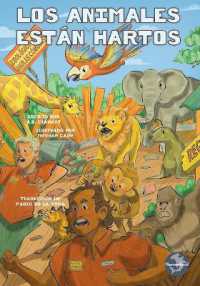Full Description
The historical context of colonisation situates the analysis in Children, Care and Crime of the involvement of children with care experience in the criminal justice system in an Australian jurisdiction (New South Wales), focusing on residential care, policing, the provision of legal services and interactions in the Children's Court.
While the majority of children in care do not have contact with the criminal justice system, this book explores why those with care experience, and Indigenous children, are over-represented in this system. Drawing on findings from an innovative, mixed-method study - court observations, file reviews and qualitative interviews - the book investigates historical and contemporary processes of colonisation and criminalisation. The book outlines the impact of trauma and responses to trauma, including inter-generational trauma caused by policies of colonisation and criminalisation. It then follows a child's journey through the continuum of care to the criminal justice system, examining data at each stage including the residential care environment, interactions with police, the provision of legal services and experiences at the Children's Court. Drawing together an analysis of the gendered and racialised treatment of women and girls with care experience in the criminal justice system, the book particularly focuses on legacies of forced removal and apprenticeship which targeted Aboriginal and Torres Strait Islander women and girls. Through analysing what practices from England and Wales might offer the NSW context, our findings are enriched by further reflection on how decriminalisation pathways might be imagined. While there have been many policy initiatives developed to address criminalisation, in all parts of the study little evidence was found of implementation and impact. To conclude, the book examines the way that 'hope tropes' are regularly deployed in child protection and criminal justice to dangle the prospect of reform, and even to produce pockets of success, only to be whittled away by well-worn pathways to routine criminalisation. The conclusion also considers what a transformative agenda would look like and how monitoring and accountability mechanisms are key to new ways of operating. Finally, the book explores strengths-based approaches and how they might take shape in the child protection and criminal justice systems.
Children, Care and Crime is aimed at researchers, lawyers and criminal justice practitioners, police, Judges and Magistrates, policy-makers and those working in child protection, the criminal justice system or delivering services to children or adults with care experience. The research is multidisciplinary and therefore will be of broad appeal to the criminology, law, psychology, sociology and social work disciplines. The book is most suitable for undergraduate courses focusing on youth justice and policing, and postgraduates researching in this field.
Contents
Introduction
Chapter 1: Historical and contemporary contexts of out-of-home care
Chapter 2: Care-experience, trauma, Abuse and the criminal justice system
Chapter 3: The residential care environment
Chapter 4: Policing children with care experience
Chapter 5 Lawyers, cultural competence and advising children with care experience
Chapter 6: Care-experienced children in the NSW Children's Court
Chapter 7: Gender and criminalisation
Chapter 8: Reducing criminalisation: innovations from England and Wales
Conclusion: 'hope tropes' and routine criminalisation








